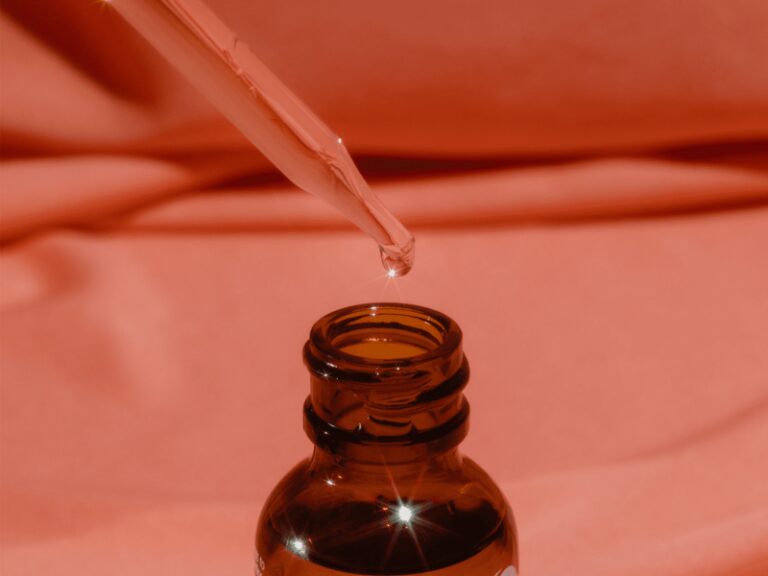
How to Exfoliate Potential Side Effects The Final Takeaway
When it comes to skincare 101, exfoliation is one of the “basics” that comes along with cleansing, moisturizing, and sun protection. Yet it’s also one of the most asked-about, as with any other skincare basic, there are levels to exfoliating. From finding the right type of exfoliant (physical or chemical?) to using a proper technique, understanding the ins and outs of exfoliating is key to keeping your skin happy and healthy. Ahead, see our complete guide to exfoliants and how to exfoliate, complete with insights from board-certified dermatologists.
What Are Exfoliants?
Exfoliants are skincare ingredients (or tools) that help get rid of dead cells to give your face a fresh, clean look and feel. "Exfoliants create a smoother, brighter complexion and allow our skincare products to be more effective as they work to remove and slough off dead skin cells from the surface of the skin, which happens over time," shares board-certified dermatologist Tess Mauricio, MD, FAAD. Typically, the two biggest categories of exfoliants are chemical and physical, with several options for each—we'll dive more into that below.
Chemical vs. Physical Exfoliants
Chemical Exfoliant
Using acids or enzymes, a chemical exfoliant is not your typical beaded face scrub. “Chemical exfoliants penetrate deeper into the skin and use alpha hydroxy acids and beta hydroxy acids,” Mauricio shares. “The most commonly used AHAs are glycolic acid and lactic acid, while the most popular BHA is salicylic acid. Chemical exfoliants exfoliate the skin, shed the dead skin layer, and dissolve proteins that clog pores (keratolytic). They allow replacement of old, dead skin cells with new, fresh ones, resulting in clinically smoother, brighter skin.”
Physical Exfoliant
Physical exfoliants are the more commonly recognized products in the exfoliant category, and these use abrasive ingredients to break down and remove dead skin cells. You’ll typically see a physical exfoliant in the form of a scrub and will often see ingredients such as walnut, apricot, or sugar granules, board-certified dermatologist Shari Sperling, DO, notes. “Physical exfoliants also use beads, seeds, and powders to mechanically remove dead skin,” Mauricio adds. “They are great for oily skin, as it can help remove any layers of buildup.”
The Most Popular Types of Exfoliants
Alpha Hydroxy Acids
Alpha hydroxy acids, more commonly known as AHAs, are typically used in chemical exfoliants. Generally, the most popular AHAs used for exfoliating are glycolic acid and lactic acid. AHAs have a general goal of improving cell turnover, which can result in the acceleration of cell cycles (anti-aging) and improved smoothness of skin.
Beta Hydroxy Acids
Beta hydroxy acids, more commonly known as BHAs, are another popular chemical exfoliant option. Generally, the most popular BHA used for exfoliating is salicylic acid, which is commonly found in cleansers, peels, masks, and acne-fighting products. Salicylic acid can be useful for quick, simple peeling and is generally recommended for those with acne or acne-prone skin.
Polish
Polishes—AKA exfoliating powders—can often be a hybrid between chemical and physical exfoliants. A powder-like material often features small physical exfoliants while also including AHAs and/or BHAs for a quick at-home exfoliating solution.
Scrub
Arguably the most popular exfoliating tool, a facial scrub is your “typical” physical exfoliator, with options available at any high-end retailer or drugstore. Often formulated with ingredients like sugar, walnuts, or tiny beads, scrubs can generally be tougher on the skin, so use them gently and infrequently.
The Benefits of Exfoliants
The benefits of exfoliating are simple yet impactful, making it a no-brainer why so many of us incorporate the practice into our routine. A few main perks are as follows:
- Removes dead skin: As Mauricio mentioned, exfoliants help you to clear out dead skin and promote new, fresh cells.
- Unclogs pores: If you’re prone to acne or generally clogged pores, exfoliants may be your answer to a clearer complexion. Mauricio says that many exfoliating ingredients are keratolytic, meaning they dissolve proteins that otherwise would sit in your pores and clog them.
- Boosts radiance: With dead, dull skin, grime, and other congesting elements cleared out, exfoliants help you achieve a smoother, more radiant complexion.
- Improves various skin conditions: By removing buildup from the pores, exfoliants often end up helping with skin conditions, prevention, and treatment. Sperling specifies that exfoliating can typically help with acne, anti-aging, tone, texture, hyperpigmentation, and to treat and prevent ingrown hairs.
How to Exfoliate
Exfoliants are powerful, so you should always use them intentionally, carefully, and minimally. Less is more with this treatment, regardless if you opt for a chemical or physical exfoliant. The experts recommend using exfoliants two times a week on clean, fresh skin, also noting that consistency is key for the best results. As always, consulting your dermatologist is a good idea before working exfoliants or any ingredients into your routine, especially if you have sensitive skin or are worried about disrupting the efficacy of existing products.
Potential Side Effects
Exfoliants are made to remove dead skin and help with clog pores, but as a result, they can be abrasive. It’s important to choose the right exfoliants and use them consistently while also listening to your skin and eliminating anything that maybe be irritating. “Overuse can lead to redness, irritation, and damage to your moisture barrier,” Mauricio says. “Beware of at-home chemical peels, as they can lead to burns and possible permanent skin injury and scarring if done improperly. Consult your dermatologist for medical-grade chemical peels and products with higher concentration of AHA and BHA for the best results and safety.”
The Final Takeaway
Exfoliating is a great way to get rid of dead skin cells and keep your pores in balance, which explains why so many of us integrate physical and/or chemical exfoliants into our routines. While exfoliating properly is generally safe and effective, it's important to choose the right type, avoid overdoing it, and pay attention to whether your skin is reacting to a new exfoliation routine. As long as you're careful and smart about it (and consult a dermatologist when you're not sure where to start or need something more powerful), you're sure to find that exfoliating helps you achieve a smoother, more radiant complexion.
Article Sources Byrdie takes every opportunity to use high-quality sources, including peer-reviewed studies, to support the facts within our articles. Read our editorial guidelines to learn more about how we keep our content accurate, reliable and trustworthy.
-
Grajqevci-Kotori M, Kocinaj A. Exfoliative Skin-peeling, Benefits from This Procedure and Our Experience. Med Arch. 2015

